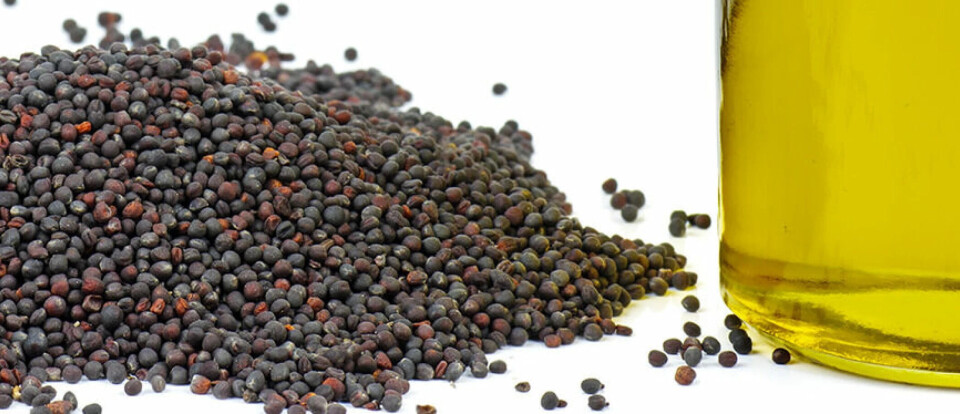
GM aquafeed ingredient approved for use in Norway
Omega-3 oil derived from bioengineered canola is already available in North America, Chile, and Australia
An omega-3 fish feed ingredient derived from genetically modified canola has become the first GM product to be approved for use in Norway.
Australian-owned Nuseed won approval for its Aquaterra-branded oil derived from GM canola (a type of oilseed rape) after Norway’s Science Committee for Food and Environment (VKM) carried out a risk assessment of the product for use in fish feed on behalf of the Norwegian Food Safety Authority (Matillsynet).
The committee concluded that fish feed containing the oil does not pose an increased health risk for fish or have any indications of increased environmental risk compared to conventional fish feed with oils from other sources.
Tolerance to pesticides
As well as being modified to produce omega-3 long-chain fatty acids, the canola contains a gene that confers tolerance to pesticides with glufosinate-ammonium, which is prohibited from being used in Norway. VKM stated that the protein that gives this tolerance has been assessed as safe by the EU’s food safety authority EFSA.
VKM further stated that any protein residues in Aquaterra rapeseed oil, including that which gives tolerance to glufosinate-ammonium, are negligible.
Matillsynet has ruled that Aquaterra and feed containing it must be labelled as containing GM ingredients, but that stipulation does not extend to the fish that eat the feed.
Target market
“Norway has always been a target market for Aquaterra omega-3 oil, and we are excited about the positive contribution to the industry,” said Benita Boettner, global general manager of Nuseed Nutritional.
“Advancing the seafood industry is essential because farmed fish are less resource intensive, with a lower-carbon impact than other proteins.”

Aquaterra has been approved in Norway for fish feed only, but Nuseed said its regulatory team is currently advancing separate applications for its Nutriterra ingredient for human food and Aquaterra for animal feed uses in the European Union and United Kingdom.
The company already has approvals for use in the United States, Canada, and Australia, and Aquaterra was commercially launched for use in Chilean salmon production in 2020.
Reduced FIFO ratio
In 2021, Aquaterra was certified for sustainable aquafeed production by accreditation body Friend of the Sea.
According to Nuseed, the inclusion of Aquaterra in aquafeed oil mix reduces Fish In: Fish Out (FIFO) ratios by as much as 62%, while improving the omega 3: omega 6 ratio and DHA:EPA fatty acid ratios.
Commercial-scale trials carried out on Atlantic salmon in Chile in 2018 and 2019 showed a decrease in mortality of the fish fed Aquaterra as part of their diet, with inclusions rates ranging from 1.49% to 1.90%.
California-based Nuseed has contracted farmers in Montana and North Dakota to grow its variety of GM canola in the US, and has pointed out that farmers in Canada, Australia and the US collectively grow more than 10 million hectares of canola annually, enabling a rapid scale-up in production if they switched to Nuseed’s GM crop.
The company says that a single hectare of its GM canola has the potential to produce the same amount of omega-3 oil as 10,000 fish each weighing a kilogram.






















































